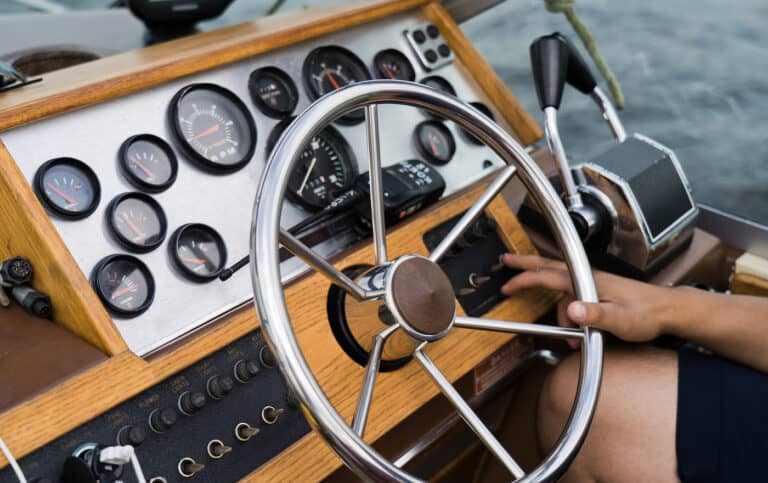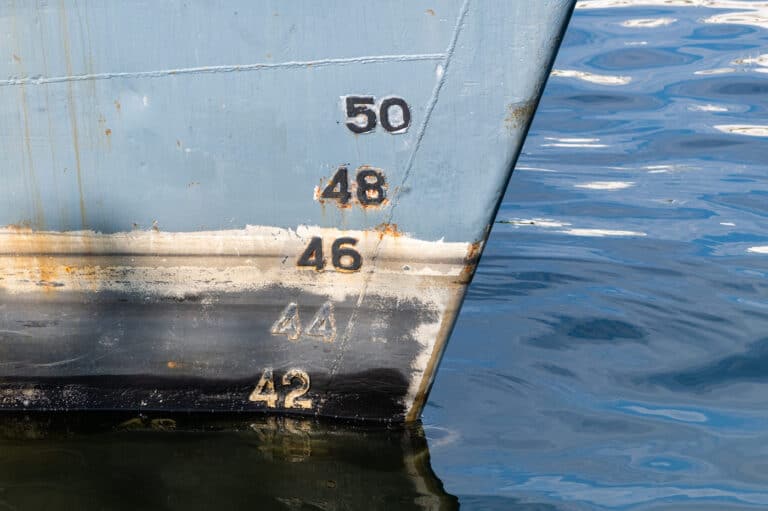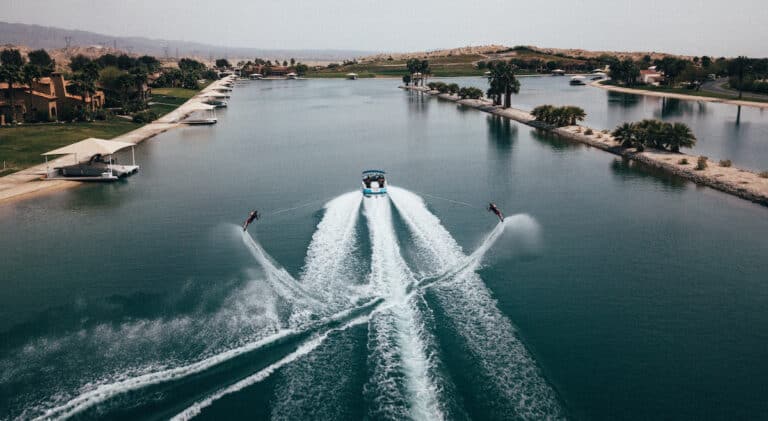Affiliate Disclosure: Some of the links in this post are affiliate links. As an Amazon Associate, we earn from qualifying purchases. Read our affiliate policy for more information.
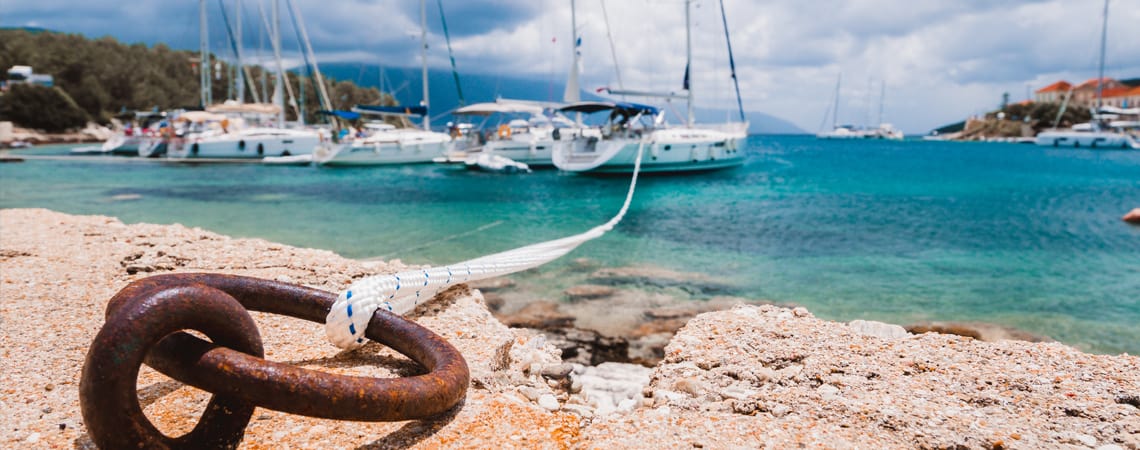
How to Beach a Boat & Best Boat Beach Anchors
Today, DesperateSailors will cover one of the most crucial pieces of knowledge boat owners should have – how to beach a boat.
You can beach your boat in any way you like or can. However, proper beaching pursues to:
- Minimize damage to your boat.
- Make sure that the boat doesn’t get stuck or float away as the tide changes.
- Make sure that you can easily leave the beach when the time comes.
Below, we will share a number of super-useful tips to help you ensure that your beaching process complies with these three points.
Beaching Your Boat Off the Beach
If possible, you should beach your boat away from the shore. There are several good reasons for this:

- The sand is less likely to damage your boat.
- You will spend less time beaching your vessel.
- Off the beach, it’s less likely that your boat will get stuck as the tide changes.
With that said, to park your boat off the beach, you will need an anchor. Getting an anchor is associated with not only purchase costs but also installation. Although if you are willing to equip your vessel with an anchor, your life will become a little bit easier.
Another issue is that alone, setting an anchor is not the easiest of tasks. You have to keep track of many things while beaching your boat. If possible, have a buddy with you on board.
How to Anchor a Boat on the Beach
The step-by-step process of beaching a boat off the beach is as follows:
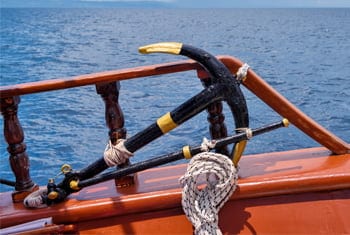
- Carefully approach the shore until the water is about waist deep. At this point, you should still be able to operate your boat.
- Carry the bow anchor to the stern of the boat. Pass the anchor rode outside of the stanchions and under the bow rail.
- The other end of the rode should be attached to the bow of your boat.
- Have your companion lower the bow anchor at the stern over the side. The engine should be neutral here.
- The anchor should be set in such a spot so that the rode doesn’t allow the vessel to drift into very shallow waters. The scope should be just right as well to maintain tension for proper positioning.
- When the anchor touches the bottom, start moving toward the beach very slowly. Your companion should ensure that the anchor rode is away from the motor propeller.
- As the bow nuzzles into the sand, cut the motor and trim it all the way up.
- You should now remove your crew and gear (including the stern anchor) from the boat. The stern anchor should be secured to an aft cleat.
- Have your companion set the stern anchor securely on the beach.
- Pull the vessel back into the water. Use the bow anchor rode to do this. Your crew member could also give the boat a little push from the shore.
- Continue pulling on the anchor rode to spin the bow around so that it faces offshore.
- Once the vessel faces the sea, come ashore and tension the stern line to make sure that it keeps the boat in its place.
This somewhat convoluted process is necessary to ensure that you can easily leave the beach when the time comes.
- By the way, also consider adding fenders to your boat. Other boaters are likely to anchor near your beaching location too, so you should take every precaution to avoid damage to your precious vessel.
- Additionally, you should wear puncture-resistant water shoes. You don’t know what your feet will find on the bottom when you jump off the boat to manually pull it up to the shore. Sharp rocks or even broken bottles are a frequent occurrence near the shore.
Water shoes will also provide you with more traction, tremendously helping with pulling.
How to Unbeach a Boat when Anchored Off the Beach
If you do everything right, you only need to:
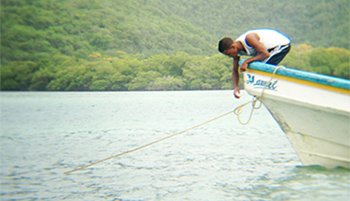
- Load all your gear and crew members on board.
- Payout a little scope on the bow anchor rode. This is so that you can take the stern anchor out of the sand.
- Pull the stern anchor onto the boat.
- Grab the bow anchor rode and pull the boat into deeper water.
- Once it’s safe to start the engines, pull up the bow anchor, trim your engine down, and get going.
5 Best Boat Anchors for Secure Beaching
Needless to say, a key component of a boat beaching system is an anchor. If you don’t have any anchors, then have a look at our list of the top of the 5 best beach anchors.
SandShark Lite 18-Inch Sand Anchor
This 18-inch boat beach anchor from SandShark is a great purchase for the money. In terms of price, it’s somewhere in the middle among our 5 picks and offers excellent value.
For durability, this auger anchor is made of stainless steel in its entirety. The tie-off ring is securely welded to the auger shaft and should not break when anchoring less than 25 feet long boats and pontoons. Using this thing is also pretty easy thanks to the included handle with foam grips.
Despite its fairly small size (just 18 inches), the SandShark anchor appears to have plenty of holding power. Though for larger boats, you’d definitely want something bigger.
Orange Screw The Ultimate Ground Anchor
The Ultimate Ground Anchor pack comes with 4 compact auger anchors. Sized at 9 feet 1/2 inches, these anchors are optimal for smaller boats. Orange Screw doesn’t give any numbers, but we’d guess that these anchors will work for vessels under 10-15 feet.
The Ultimate Ground Anchors are made of recycled plastic, so they aren’t as tough as the SandShark anchor. With that said, given that you don’t ask the impossible from these anchors, they should not break in use. Even if they do, Orange Screw backs this pack by a lifetime breakage guarantee.
SandShark Supersport Anchor
The SandShark Supersport boat beach anchor is the priciest option on our top. It’s perhaps not as strong as the SandShark Lite sand anchor, but it has a few cool features that may win you over.
The Supersport anchor is collapsible and fairly space-efficient. When fully extended and ready for use, it’s a whopping 48 inches long. When collapsed, its length is 29 inches, which is fairly long, but it’s better to deal with 29 than 48 inches.
The handles in The Supersport anchor are collapsible too.
In terms of boat capacity, this thing is designed for up to 23 feet vessels. Supersport is made of a combo of strong composite resin and aluminum, so it should be pretty sturdy. But it’s definitely not as strong as the SandShark Lite anchor.
Seachoice Beach Spike
The Seachoice anchor is made in the style of a spike. It is designed to be driven into the sand with impact rather than screwing.
Thanks to its self-hammering action, this anchor spike is very easy to use. The rubber handle is easy to grip as well and provides plenty of traction for easy pulling.
With a length of 21-11/16 inches (this is the length of the portion that’s designed to go into the sand), this spike has plenty of holding power and is intended for up to 30 feet boats. Made of what appears to be galvanized steel, the Seachoice beach spike should easily withstand heavy use as well.
Slide Anchor Spike
Finally, we have the Slide anchor spike.
Notably, the Slide anchor spike is available in two sizes – small and large. Judging by the specs on Slide’s official website, the small spike is designed for up to 25 feet boats, while the large one is for 38 feet boats.
Just like the Seachoice beach spike, the Slide anchor spike has self-hammering action and is very easy to drive into the sand.
This particular variant of the Slide spike is made of galvanized steel, though there are powder-coated and stainless steel options too. But those are a little more expensive.
Beaching Your Boat on the Beach
If you do not have any anchors or want to beach faster, then you may settle your vessel directly on the beach. This is arguably easier to do than beaching away from the shore. However, there are some big hazards awaiting you once you are on the shore:
- The sand may damage the coating of your vessel’s hull.
- If the tide recedes, your boat may become stuck on the shore.
- If the water rises, then your water may float away from the shore.
With these in mind, the most important thing to do with on-shore beaching is to know the tide chart. You must know whether there is currently a high or low tide in the area you want to beach.

How to Beach a Boat on the Beach
To beach your boat on the shore, follow these steps:
- As mentioned earlier, check out the tide chart. If the tide is rising, then you should move your boat higher up the sand to make sure that it will not float away. If the tide is receding, then your boat should be beached lower on the sand so that when the water level lowers, the boat doesn’t get stuck.
- The best spot would be a sandy or soft area with an incline. Getting the boat onto and off such a place is fairly easy.
- Investigate the beach to determine the composition of the bottom. Sharp rocks, mud, or muck could damage or trap your vessel.
- Find a spot that provides you with a clear view of the beach and allows you to float. Approach this area very slowly to prevent damage to the boat.
- Once the water gets waist-deep, cut the engine and trim the motor up.
- Have your companion get in the water and pull the boat onto the beach with a bowline.
- Settle the boat on the beach. The keel should not be entirely on the sand – this will ensure that you can easily get the boat back into the water.
- Depending on the time and tide, occasionally relocate your boat to make sure that it doesn’t get stuck. You may have to move your boat every hour or so.
When you want to leave, perform these steps in reverse to unbeach your boat. If you do everything right and mind the tides, this should be very easy.
- You may optionally anchor your boat to the beach to prevent it from drifting away. But to be fair, if you have an anchor, you should probably just anchor off the shore.
How to Beach a Pontoon Boat
You may use the two procedures we described earlier with pontoon boats as well. With that said, pontoon boats have a few features that make them easier to beach:
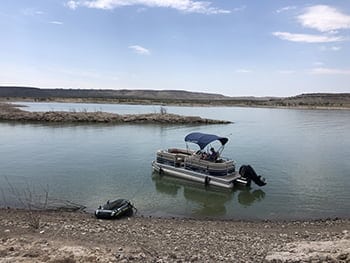
- Typically, pontoon boats have no gel coats to be damaged.
- Pontoon boats are resistant to sand and rocks, though if you gun your boat up the beach, you are still going to damage it.
- Pontoon boats are fairly easy to unload.
With all this in mind, you may be a little less careful with a pontoon boat. However, the beaching procedures we gave earlier fully apply to pontoon boats, so make no mistake.
Again, we’d recommend that you not beach your pontoon boat directly on the shore. Anchoring your boat off the shore may be more challenging, but you won’t have to worry about tides as much, and you are much less likely to damage your boat when leaving the beach.
How to Beach a Boat – Final Words
Hopefully, our tips on how to beach a boat will help you beach your vessel effortlessly and safely. There is nothing too difficult about beaching, but it does take some practice to do the procedure perfectly.
Don’t be afraid of making small errors, but do everything you can to avoid damage to your boat. Mind the tides as well – these are your biggest enemy in beaching!
References
- Boating Safety – Learning to Set and Retrieve an Anchor Is an Important Safe Boating Skill
- NOAA – Tide Predictions
Last update on 2024-04-22 / Affiliate links / Images from Amazon Product Advertising API
Disclaimers
All product names, logos, and brands are property of their respective owners. All company, product and service names used in this website are for identification purposes only. Use of these names, logos, and brands does not imply endorsement.
It is our policy to make every effort to respect the copyrights of outside parties. If you believe that your copyright has been misused, please provide us with a message stating your position and we will endeavor to correct any misuse immediately.
Some of the links in this post are affiliate links. As an Amazon Associate, we earn from qualifying purchases. This means if you click on the link and purchase the item, we may receive an affiliate commission, at no extra cost to you. This helps us keep this website alive. Learn more here.
Amazon Disclosure
DesperateSailors.com is a participant in the Amazon Services LLC Associates Program, an affiliate advertising program designed to provide a means for sites to earn advertising fees by advertising and linking to Amazon.com. As an Amazon Associate, we earn from qualifying purchases. Amazon and the Amazon logo are trademarks of Amazon.com, Inc., or its affiliates.
Please refer to our Privacy & Affiliate policy for more details.

